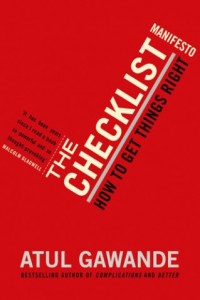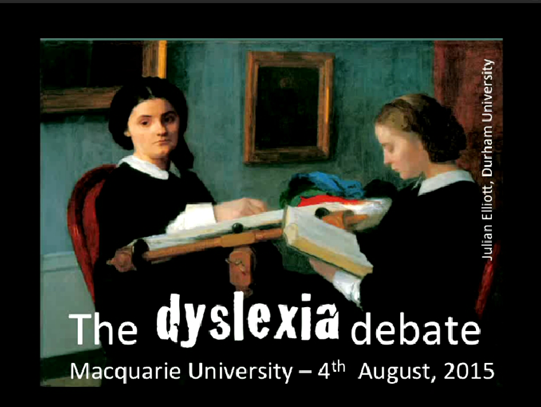IFERI is pleased to present a new paper by Sir Jim Rose, which was written as a response to Professor Julian Elliott’s recent presentation at Macquarie University, Australia.
Please click here to watch the presentation: The Dyslexia Debate
The Dyslexia Debate: A Response by Sir Jim Rose
The range and depth of enlightened thinking that DDOLL (Developmental Disorders of Language and Literacy Network) colleagues have brought to this discussion is riveting. It transcends historic wrangles over the term dyslexia that have done little to take us forward. Belatedly, I should like to add a couple of wild cards to this captivating exchange of views. The purpose in so doing is to explore further what might done to make sure far more of the children within the frame of so-called ‘instructional casualties’ receive consistently high quality teaching of reading and related aspects of literacy. Arguably, if schools could achieve this the benefits to children would be enormous and the need for costly intervention programmes reduced.
First, given that the education profession has access to a vastly greater knowledge of reading development than ever before, why is it that we continue to see confusion, not to say dissent, in schools and teacher training, about the teaching of reading, particularly in respect of phonics and dyslexia?
In the UK, although there has been considerable progress over the last decade, we still suffer from outbreaks of phonic phobia and tiresome tensions between fake opposites, such as, phonics v ‘reading for meaning’. Despite the enactment of a National Curriculum which makes such teaching mandatory, we have not yet achieved universal agreement in schools that teaching children how the alphabet works for reading and writing is crucially important.
The mantra ‘one size does not fit all’ is often chanted against phonics. This suggests that some continue to regard phonics as one of several ‘methods’ from which to select and match to discredited notions of ‘learning styles’, rather than a body of core knowledge and skills that has to be taught and practised. In the case of phonic work, if teachers are not convinced of the value of a regularly applied systematic approach it is hardly surprising that mediocre and poor practice persist. What more might be done to make plain what high quality teaching looks like in this domain?
As Alison Wolf (Review of Vocational Education 2011) said, ‘If assessing learning is hard, assessing the quality of teaching is harder’. Because the latter assessment brings with it concerns about ‘blaming teachers’ for children’s failures in reading it leads to reluctance to tackle what are often straightforward, improvable aspects of practice within the control of the teacher and the school.
England may not top the international league tables of pupil performance but we must be among world leaders in the amount of inspection and testing that takes place in our schools, starting in the primary years. Many years spent as a school inspector observing teaching in England and elsewhere convinced me that there is far more variation in the quality of teaching literacy, including reading, between and within schools than there ought to be. Further, we know the distance between leading and trailing edge teaching is associated with unacceptable variations in pupil performance, and that the impact of poor teaching on children who enter school already behind their peers amplifies their difficulties.
Is it beyond our capabilities to assess the quality teaching without blaming teachers?
My second wild card is to ask what we might learn from other professions. Anecdotes are sometimes useful so here goes…
Last year an unfriendly tree wrote off my car. I survived the crash due to the incredible expertise of the medical profession. This unwelcome event had an upside, however, in that it gave me an opportunity to compare the performance of two life changing professions: medicine and education. I had lots of time to catch up on reading about reading while experiencing our National Health Service at its best. Further, I was able to listen to the 2014 Reith lectures by the acclaimed surgeon Atul Gawande. He declared that he was in ‘the disturbance business’ and explored thorny issues, such as, ‘Why doctors fail’. I then read his book: ‘The Checklist Manifesto – How to get things right’ and watched with his TED talk: ‘How do we heal medicine? Many of Gawande’s insights apply to getting things right in education. As a frontline surgeon, he drew upon keenly observed and detailed analyses of medical practice. His concept of our ‘necessary infallibility’ has much to commend it should we dare to explore more forensically why teaching fails while making sure teachers know that the purpose of so doing is to work with them to improve the quality of teaching and achieve better outcomes for children.
Many of Gawande’s insights apply to getting things right in education. As a frontline surgeon, he drew upon keenly observed and detailed analyses of medical practice. His concept of our ‘necessary infallibility’ has much to commend it should we dare to explore more forensically why teaching fails while making sure teachers know that the purpose of so doing is to work with them to improve the quality of teaching and achieve better outcomes for children.
Medicine and education are ‘person-to–person’ services subject to human fallibility and to human ingenuity for solving problems: success is won by learning from our mistakes. Both professions look to research for solutions. They also rely on knowledgeable and skilled practitioners to make sure that as far as possible decisions are ‘evidence-based’ and ‘proven’ in practice. Equally important, they must be capable of making sound judgements when faced with the hard question: ‘what should we do when research is inconclusive, evidence is lacking and doing nothing is not an option?’
Among other things, Gawande suggests that doctors fail through lack of knowledge and, or, ineptitude, that is to say, insufficient skill in applying knowledge. He counts himself among them in these respects. He sees mistakes as opportunities: ’we have an opportunity before us, not just in medicine but in virtually any endeavour. Even the most expert among us can gain from searching out the patterns of mistakes and failures and putting a few checks in place. But will we do it? Are we ready to grab onto the idea? It is far from clear’.
The notion that we should actively build a school and classroom culture that enables teachers and, equally important, enables children as learners, to learn from patterns of mistakes is an idea worth grabbing. Moreover, his ‘Manifesto’ embraces a set of ethical principles and expectations worth taking on board:
“First is an expectation of selflessness: that we who accept responsibility for others – whether we are doctors, lawyers, teachers, public authorities, soldiers or pilots – will place the needs and concerns of those who depend on us above our own. Second is an expectation of skill: that we will aim for excellence in our knowledge and expertise. Third is an expectation of trust-worthiness: that we will be responsible in our personal behaviour toward our charges.
Aviators, however, add a fourth dimension, discipline: discipline in following prudent procedure and in functioning with others.”
For Gawande professional ‘discipline’ is aided by a ‘checklist’ which transforms ‘cowboys into pit crews’. That is indeed a powerful idea – but you must Google his short TED talk to understand it. (Or click at the end of this post to watch it.)
I have rambled on long enough save to ask: is there anything to be said for embracing some of these ideas, including, perhaps, developing a ‘checklist’ for teaching systematic, synthetic phonics?
With special thanks to Macquarie University for allowing us to distribute and use the link to Professor Julian Elliott’s presentation.



